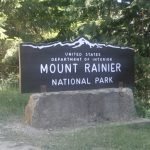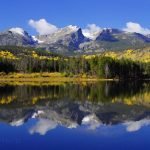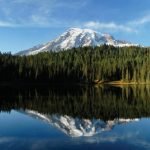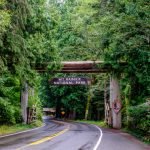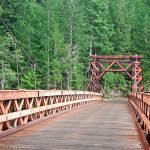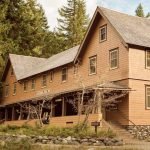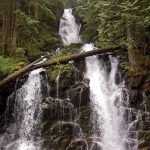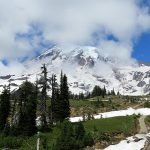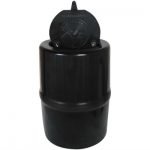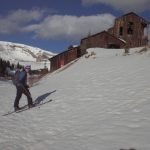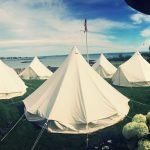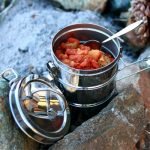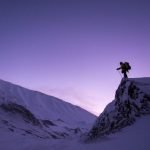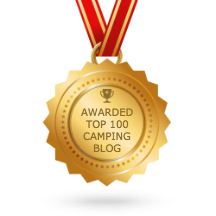When I was in Americorps*NCCC one of our assignments was to go to Mt. Rainer and evaluate their need to have a crew come do work for them. I feel in love with the park but have never had the chance to return. So this week lets virtual visit Mt. Rainer National Park.
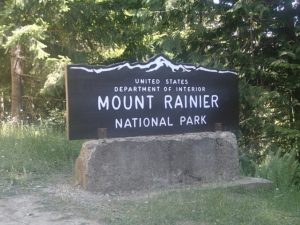
“Every one of these parks… is a garden filled knee-deep with fresh, lovely flowers of every hue, the most luxuriant and the most extravagantly beautiful of all the alpine gardens I ever beheld in all my mountain-top wanderings,” wrote John Muir, describing his ascent of Washington’s Mount Rainier, the highest peak in the Cascade Mountains. One of the world’s most massive volcanoes, Mount Rainier can be the main thing you see on the skyline for 100 miles before you reach the park named after it. At nearly three miles in height, Mount Rainier is the tallest peak in the Cascade Range; it dwarfs 6,000-foot surrounding summits, appearing to float alone among the clouds. Mount Rainier National Park was established in 1899. This National Park is the nations 5th oldest park. Mount Rainer is 14,410 feet tall. The Park encompasses 236,381 acres. There is much more to this Park than Mount Rainier’s peak… If you’re an avid hiker, you won’t find a better place for stunning scenery. Mount Rainer National Park was originally set aside because of the lovely forests surrounding the mountain. In addition to Rainier and its stunning views, there are subalpine meadows, a volcanic past, and many glaciers that are an important natural wonder to preserve.
Native American tribes referred to the mountain as Tahol, which means mother of waters, Tacoma which means a place where the water begins, or Tahoma, which means snowy peak. Explorer George Vancouver renamed the mountain in honor of his friend, Rear Admiral Peter Rainier. Rainier is the most heavily glaciated peak in the lower 48 states, with 26 major glaciers and 36 square miles of permanent snowfields and glaciers. A wide variety of groups came together to help establish the park in 1899. Scientists, mountaineers, conservation groups, local businesses, and large railroad companies all saw some possible benefit from a national park around Mount Rainier. They combined their often disparate interests into a lobbying campaign starting in 1893. The lobbying campaign stressed the potential for tourism from the nearby cities of Seattle and Tacoma, the unsuitability of land for other commercial purposes like agriculture, grazing, or mining, and a need to preserve the unique glacial landscape for further study. After hesitant congressmen received assurances that the park would not come as an added expense to the government, the bill passed in 1899. President McKinley signed the bill and Mount Rainier became the nation’s fifth national park.
Mount Rainier is a volcano located southeast of Seattle, Washington in the United States. It is only 54 miles southeast of Seattle and is considered to be an active volcano. It last erupted in 1894 and continues to have many high-frequency earthquakes, believed to be the result of the circulation of hot fluids that are circulating inside Mount Rainier. Wildflowers are at their best in July and August. High trails may remain snow covered until mid-July. Cross-country skiing and snowshoeing are popular in winter. The Longmire area, born of James Longmire’s homestead and mineral springs resort, served as central headquarters for the park during its early years at the beginning of the 20th century; today, it is a small designated national historic district that preserves the cultural history of the park. It is located in the southwest corner of the Park near the Nisqually entrance.
—- Location —-
Mount Rainier National Park is about 60 miles south of Tacoma, Washington. From Tacoma (70 miles) to the Nisqually Entrance (open year-round), take I-5 to Washington 7, then follow W-706. From Yakima, Washington take W-12 west to W-123 or W-410 and enter from the Park’s east side (Stevens Canyon or White River Entrances closed in winter). For the northwest entrances (Carbon River and Mowich Lake), take W-410 to W-169 to W-165, then follow the signs. Major airports in the area are Seattle, Washington, and Portland, Oregon.
—- Park Camping —-
There are 3 semi-modern campgrounds located inside the Park with 473 sites. The 4th campground inside the Park has 13 sites for tent camping only. There are no electrical, water, or grey water hookups in any of the campgrounds. Although campsites are available on a first come, first served basis, you can reserve sites at the Cougar Rock and Ohanapecosh Rock campgrounds by visiting the Recreation.gov website. Limited supplies are available at the National Park Inn at Longmire, Sunrise Lodge, and in the communities of Ashford, Packwood, Eatonville, and Enumclaw. Ice is available at Longmire and in Ashford and Packwood. Group campsites are available at Cougar Rock Campground and Ohanapecosh Campground. You can see more details about Park campgrounds by visiting here. Permits are not required for day hiking. However, backcountry camping overnight in the wilderness at Mount Rainier requires a permit. Backcountry Park camping information is located here.
—- Free Camping —-
Based on https://freecampsites.net/#!Mount Rainier National Park there are 18 free campsites located within 32 miles of Mount Rainier National Park.
—- Area Camping —-
http://www.rvparkreviews.com/regions/washington/mount-rainier-national-park
https://www.goodsam.com/campgrounds-rv-parks/washington/
https://www.allstays.com/Campgrounds-details/31969.htm
https://www.hipcamp.com/discover/washington/mount-rainier
https://www.outdoorproject.com/blog-news/best-camping-near-mount-rainier
—- Hiking & Biking —-
Mount Rainier National Park offers over 260 miles of maintained trails for your enjoyment. Trails lead through the peacefulness of the old-growth forest of the river valleys and the high subalpine meadows on the flanks of Mount Rainier. From the trails, you can explore and experience the forests, lakes, and streams and view the fields of wildflowers and network of glaciers. Pets and bicycles are not permitted on any park trails. A portion of the Pacific Crest Trail weaves in and out of Mount Rainier National Park along the park’s eastern boundary, from Chinook Pass in the north down to Laughingwater Creek in the south (near Three Lakes). At Mount Rainier, cyclists can enjoy bicycling that is both challenging and scenic. Bicycles are allowed on park roads. September and early October are generally excellent times for cyclists to visit Mount Rainier. During these months, there are usually fewer vehicles on the roads and fall colors enhance the scenery.
https://www.nps.gov/mora/planyourvisit/day-hiking-at-mount-rainier.htm
https://www.hikingproject.com/directory/8010842/mount-rainier-national-park
https://www.alltrails.com/parks/us/washington/mount-rainier-national-park
https://www.wta.org/go-outside/seasonal-hikes/regional/mount-rainier-hikes
https://www.mtbproject.com/directory/8010842/mount-rainier-national-park
http://www.rainiervisitorguide.com/biking_guide.html
—- Things to do —-
If you think you are up to the task of climbing Mount Rainier, which is the most heavily glaciated peak in the contiguous United States, you’ll find that it offers an exciting challenge to the mountaineer. Each year thousands of people successfully climb this 14,410-foot active volcano. Reaching the summit requires a vertical elevation gain of more than 9,000 feet over a distance of eight or more miles. Climbers must be in good physical condition and well prepared. You can also choose to join the Mount Rainier interpretive staff for a variety of free programs, ranging from informal talks at park visitor centers to junior ranger programs for kids to evening campfire programs. Topics vary from day to day and may include geology, wildlife, ecology, mountaineering, or park history. Most programs are available from late-June until Labor Day.
https://www.nps.gov/mora/planyourvisit/things2do.htm
http://mounthaven.com/mt-rainier/
https://www.lonelyplanet.com/usa/mt-rainier-national-park-area/top-things-to-do/
—- References —-
https://www.nps.gov/mora/index.htm
https://en.wikipedia.org/wiki/Mount_Rainier_National_Park
http://www.ohranger.com/mt-rainier
https://roadtrippers.com/trips/15598415
- Mount Rainier National Park….park number 39 of 59!
- Nisqually River wooden suspension bridge at Longmire village in Mount Rainier National Park, WA USA
